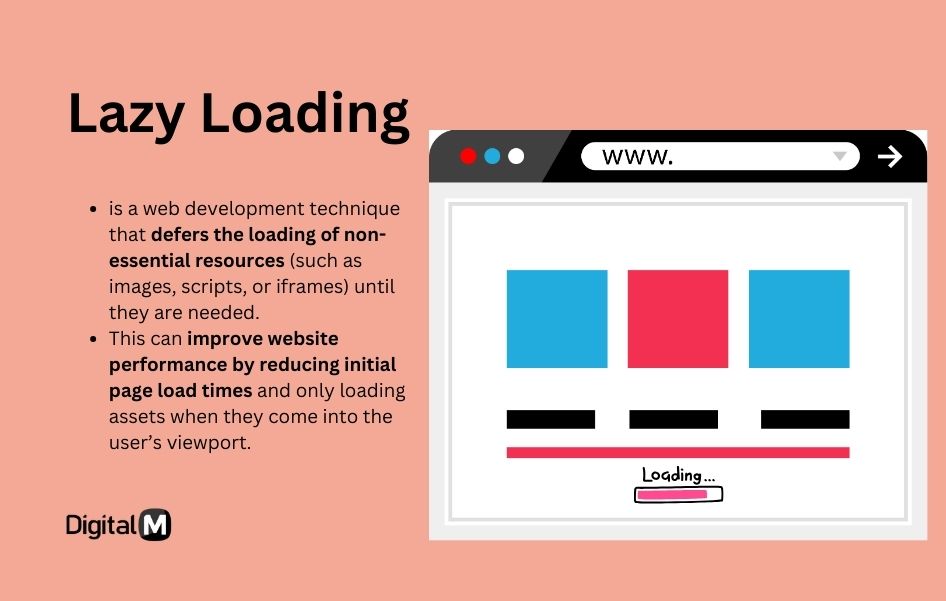Lazy Loading
Lazy loading is a web development technique that defers the loading of non-essential resources (such as images, scripts, or iframes) until they are needed. This can improve website performance by reducing initial page load times and only loading assets when they come into the user’s viewport.
Lazy loading is like loading only the images and other elements on a webpage that you can see when you first open it. Additional content is loaded as you scroll down, making the initial page load faster.

Key Points:
Improved Page Load Performance: Lazy loading helps to load a webpage faster by prioritizing the loading of visible content first and delaying the loading of off-screen or non-essential elements.
Bandwidth Savings: Users are not required to download all assets when they initially visit a page. This can save bandwidth, especially for users on slower internet connections or limited data plans.
Enhanced User Experience: By focusing on loading the content that users see first, lazy loading provides a smoother and more responsive user experience.
Implementation:
Images: Images below the fold (not immediately visible) are loaded only when the user scrolls down to view them.
Scripts: JavaScript scripts or other resources are loaded on-demand rather than all at once.
Iframes: Embedded content like videos or maps is loaded only when the user interacts with or scrolls to that part of the page.
Browser Support: Lazy loading is supported by modern web browsers, and it can be implemented using attributes in HTML (e.g., loading=”lazy” for images) or through JavaScript.
Example:
In HTML, lazy loading for an image can be implemented like this:

With this attribute, the image will be loaded lazily, i.e., only when it’s about to be displayed on the user’s screen.
Why it Matters:
Faster Loading Times: Lazy loading contributes to faster initial page load times, particularly for content-heavy websites.
Improved User Engagement: Users can start interacting with the visible content sooner, leading to a better overall user experience.
Bandwidth Efficiency: It helps conserve bandwidth, making websites more accessible to users with slower internet connections.
In summary, lazy loading is a web development technique that delays the loading of non-essential resources until they are needed. It is particularly useful for optimizing the performance of content-heavy websites and improving the user experience.

